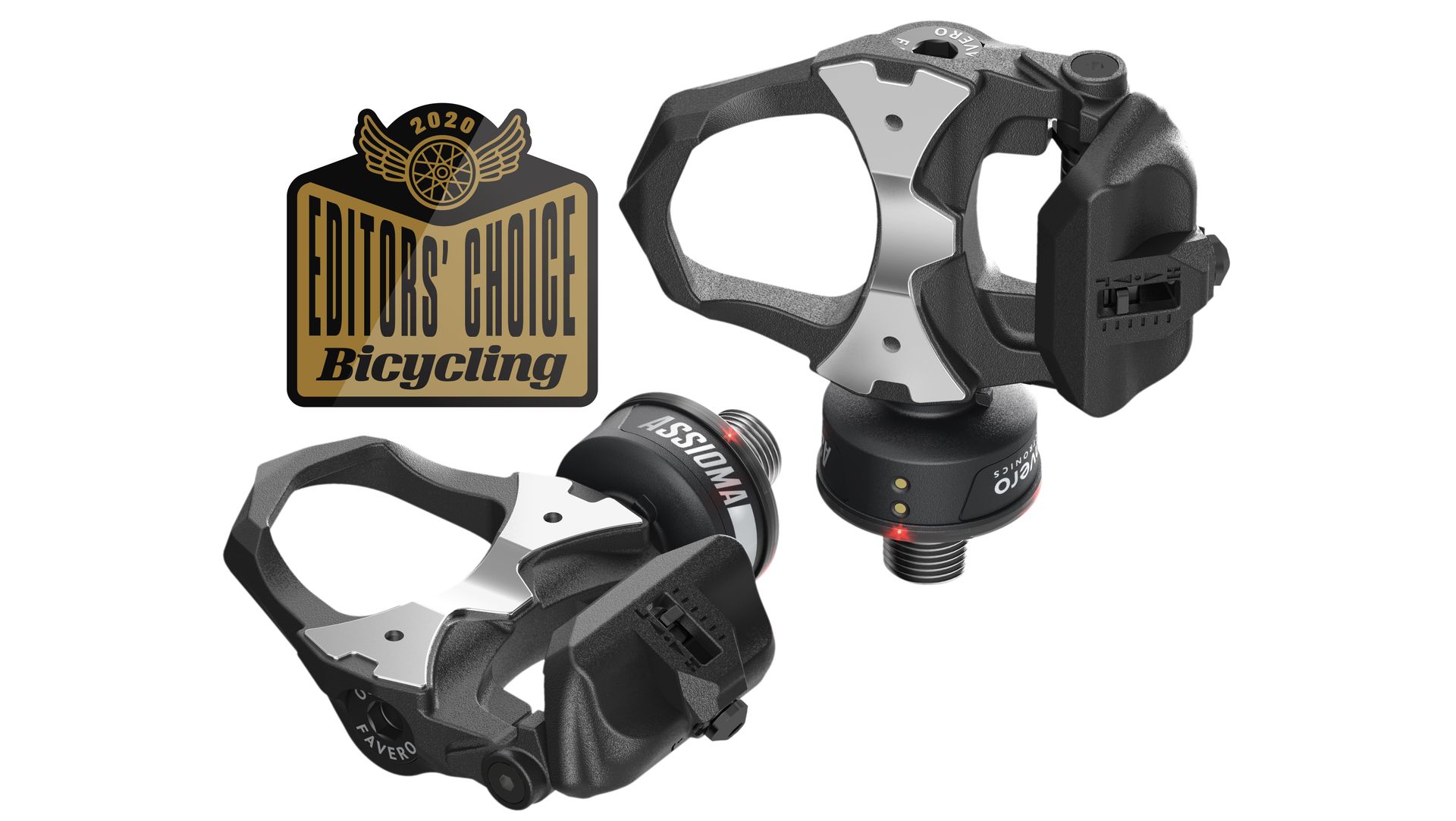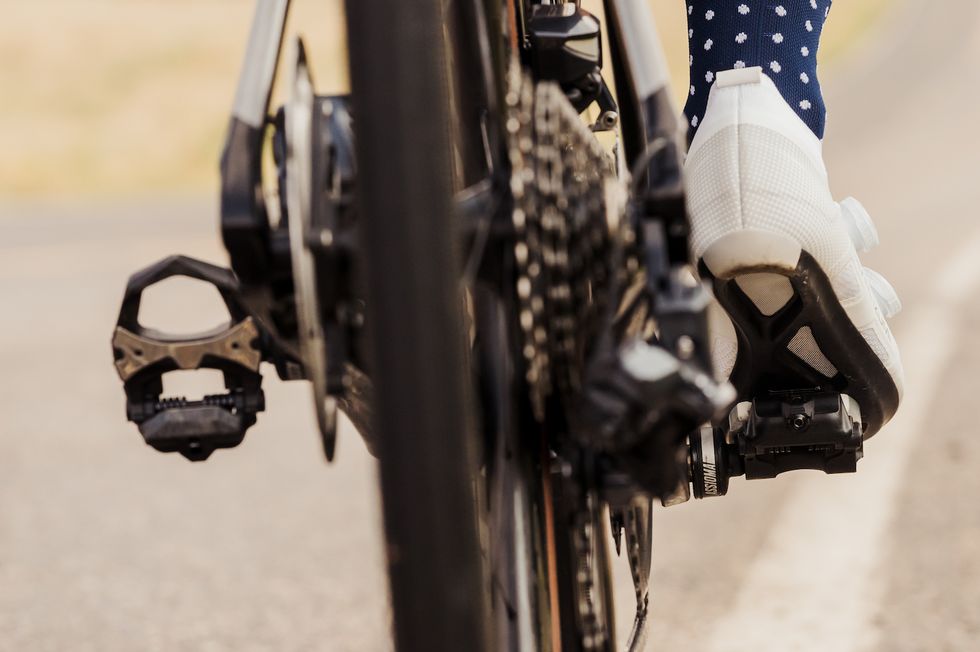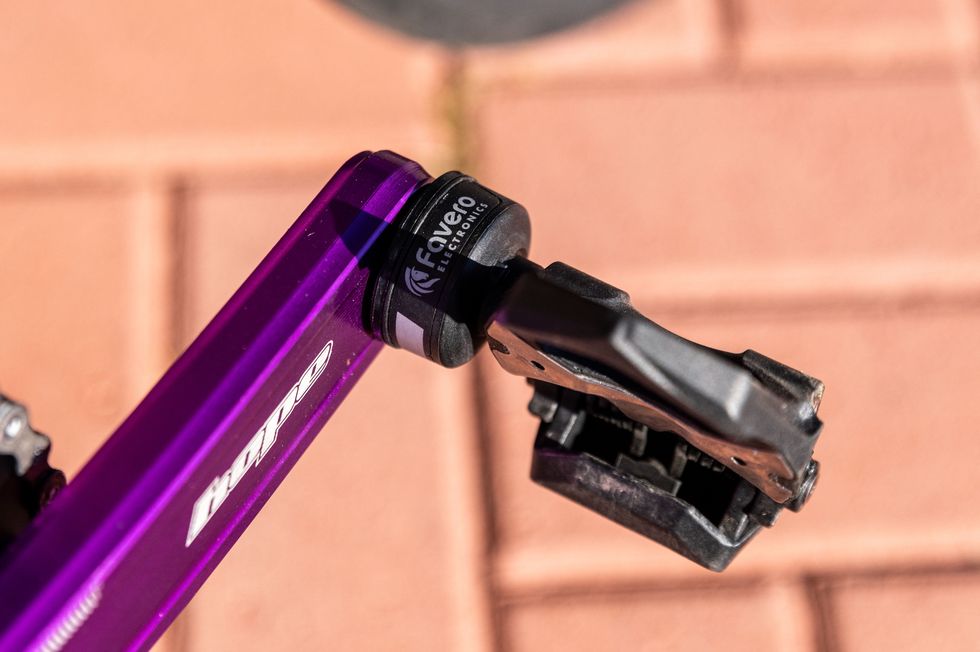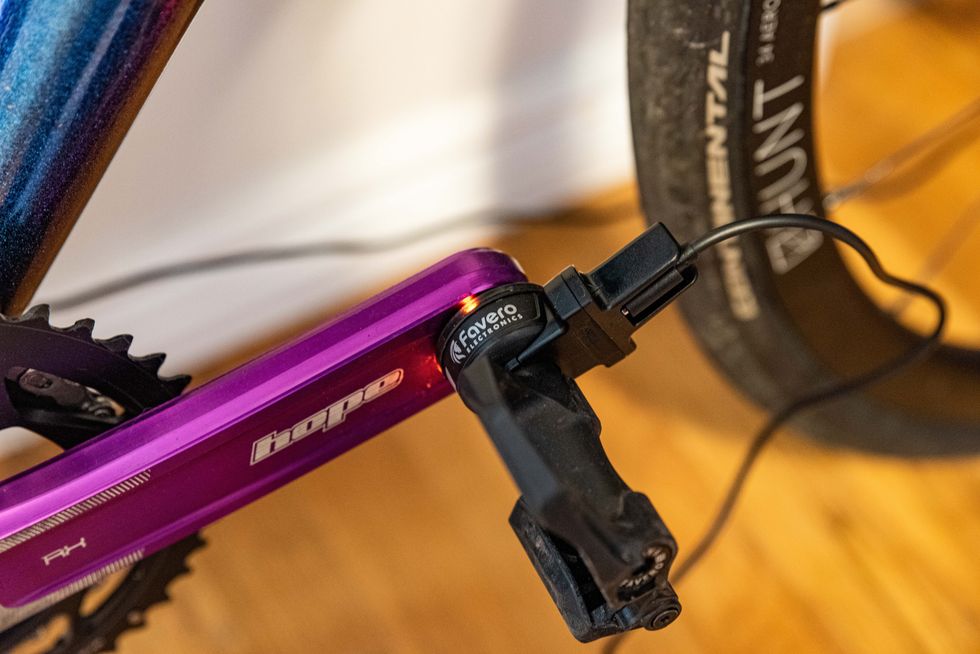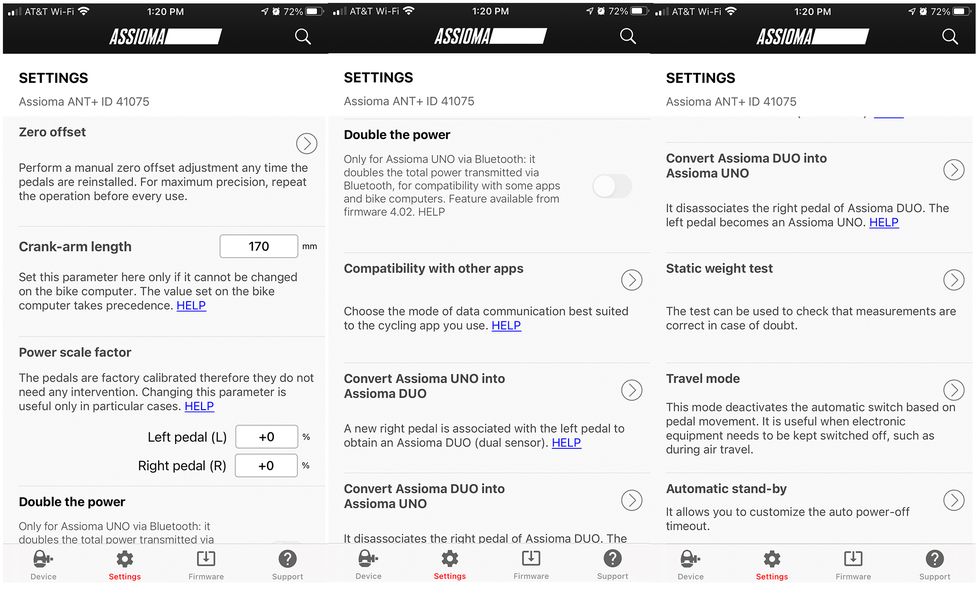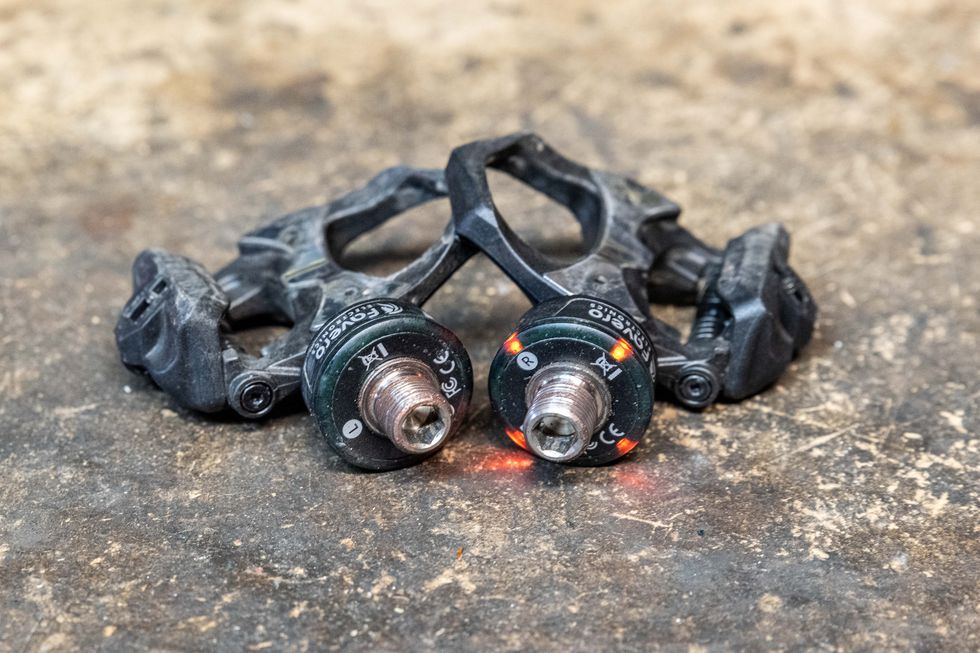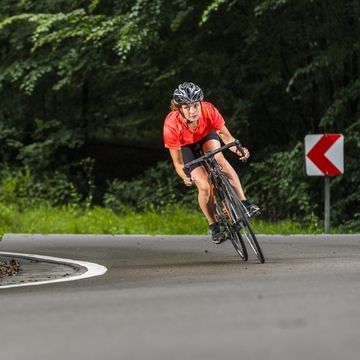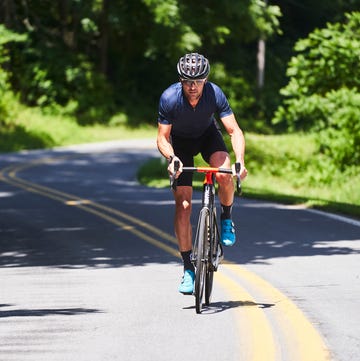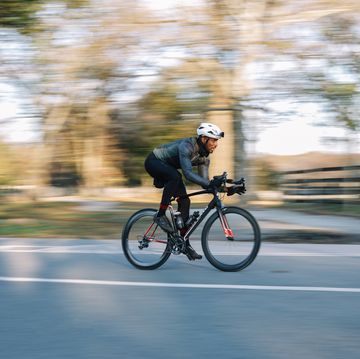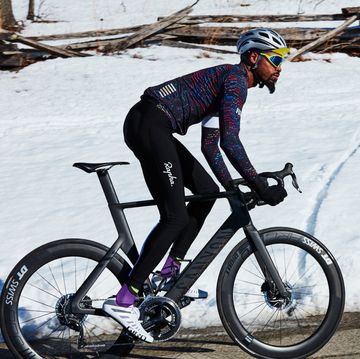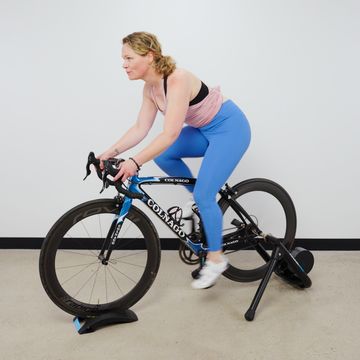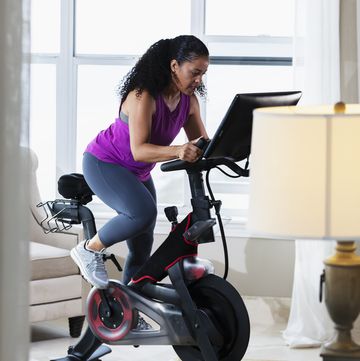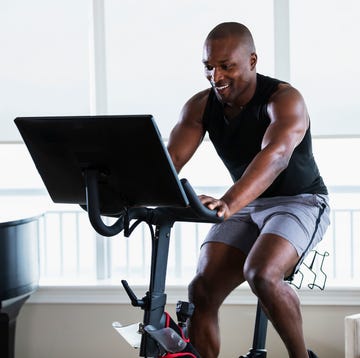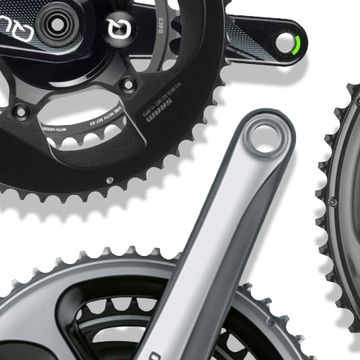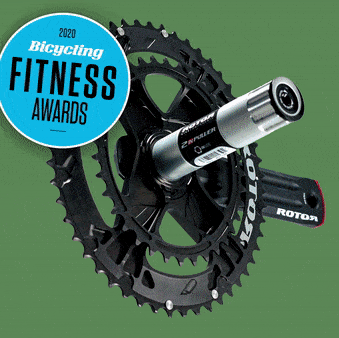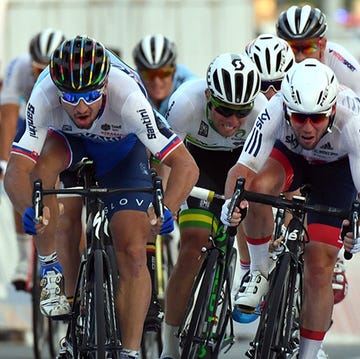The Takeaway: The best dual-sided power meter for most cyclists.
- Dual-sided power meter pedals
- Transmits Bluetooth and ANT+
- Rechargeable batteries with 50-hour claimed battery life
Weight: 303 grams (pair)
Price: $720
Buy Now
Buying a power meter can be an overwhelming experience. What format do you want? Crank axle, crank arm, crank spider, pedal, or something more exotic like opposing force? And what about compatibility with your bike? What about features? What about the price? Weight?
It can be a lot. But I’m going to make it simple. For most road cyclists, the power meter you want is the Assioma Duo. As I explain below, it’s a great value, full features light, easy to use, and accurate. It makes living with what can be a finicky piece of cycling technology easy.
The Favero Assioma
The Assioma is a pedal-based power meter system from Italian brand Favero. You can purchase a left side only version called Uno for $460, or the Duo dual-sided version like I reviewed for $720.
The pedal is compatible with Look Keo cleats, while the power meter transmits on both Bluetooth Smart and ANT+. That makes it compatible with Garmin and other GPS cycling computers, as well as apps like Zwift that run on smartphones, tablets, laptops, and Apple TV.
The Assioma runs on a rechargeable battery, which lets the company completely seal the electronics, giving it an IP67 waterproof rating. The Assioma has no pods: everything is packed into the pedal axle and sensor body. There’s nothing to align and no complicated installation procedures: thread it on.
The Duo price compares very well to other pedal power meters (see below), and other dual-sided systems, and spider-based systems. It is not the cheapest dual-sided system you can buy: You can find dual-side crank options from Stages for the same or less than the Duo. However, those systems are harder to install, harder to switch between bikes, and more prone to compatibility issues like frame clearance.
Installation and Use
The Assioma installs with an 8mm hex wrench through the back of the crank arm. Just spin it on and snug it down. Super easy, and super easy to move from bike to bike or pull and reinstall when traveling.
Two magnetic charger adapters come with the Duo pedals so that you can charge both pedals at the same time. Also included are a two-port USB wall adapter and a pair of two-meter-long USB A to USB micro cables. I found the cables more than long enough for my needs, but if you need something longer, you can find ten-footers at Amazon. Battery life is 50 hours (probably more, but 50 is a safe bet), and you’ll get a low-battery warning on your computer when the remaining battery life reaches 8 hours. Charging a completely discharged battery takes 6 hours, Assioma says.
The sensor body has four bright LEDs (one every 90 degrees), making them visible–more visible than any other power meter, pedal, or otherwise. This is nice because it makes it easier to see when they wake up, when they’ve calibrated, charge status, and other alerts. It’s a little thing, but a really lovely little thing.
Once installed and charged, you can fire up the Assioma companion app to check status, update firmware, calibrate, and perform other adjustments. One cool feature here is a travel mode, which tells the power meter not to wake up if it senses motion. This conserves the Assioma’s battery while shipping or traveling with your bike.
Pairing to your GPS computer is like any other power meter. Open your sensor pairing menu and find the Assioma (you can find the pedals’ ID numbers printed on the box or in the companion app). Like most other dual-sided power meters, the left pedal collects data from the right pedal and sends it to the head unit (ensure you set the proper crank arm length in the Assioma’s sensor settings). I paired my sample set to several computers from several manufacturers, and it was fast and glitch-free every time. In the companion app, you can also configure the Assioma to work with the small number of computers and apps that require Dual Channel L/R data transmission.
Once charged up and paired up, life with the Assioma was easy. They woke up fast, always paired up, never dropped out, and provided consistent and accurate data. Their performance as pedals was very good too. Clipping in and out was smooth and consistent, they’re secure release tension is adjustable), they were creak free, the axles are plenty stiff, and the bearings spun smoothly. If something wears out or gets damaged, Assioma offers spare parts on their site.
The Competition
The Assioma is a good power pedal that looks even better when you compare it to the competition. Compared to its three main competitors—Garmin Vector 3, Quarq P2, SRM Exakt—the Assioma has essentially the same functions and features but is cheaper, lighter, and has a lower stack height. The claimed battery life is shorter than the others, but it is still over 50 hours, and they’re rechargeable.
I’ve prepared a little comparison chart so you can see some of the critical differences. I left power meter features off the chart because all four pedals have almost identical feature sets. All have ANT+ and Bluetooth, temperature compensation, a phone app, wireless firmware updates, auto-zero, left/right balance (when using dual power meters), torque effectiveness, pedaling smoothness, and use Look Keo/Keo compatible cleats.
Compared to the other power meter formats: the pedal/crank interface is one of the only things you can count on being the same from bike to bike. Cranks have axle standards and frame clearance issues to consider. Hubs have axle standards, disc brake standards. Plus, both are tied to the whims of drivetrain standards, which can change at any time. Buy a nice power meter crank today, and it’ll likely not be compatible with the new drivetrain that rolls out in six months. Pedals don’t have these issues.
There are valid reasons to choose other power meter formats, so I’m not going to say the Assioma Duo is the best for every single cyclist. But it is the easiest to recommend because it works so well, and there’s less chance of any compatibility issues with your bike today and in the future.
Should You Buy The Assioma Duo?
I’m going to give you the one reason you shouldn’t buy Assioma pedals: if you don’t want to use a Look Keo pedal system. If you’re tied to another pedal system for whatever reason, then the Assioma is out.
But suppose you’re good with the Keo system. In that case, when you consider price, weight, ease of installation, ease of use, accuracy, features, and bike compatibility, the Assioma Duo is the best power meter—of any style—for most riders.

A gear editor for his entire career, Matt’s journey to becoming a leading cycling tech journalist started in 1995, and he’s been at it ever since; likely riding more cycling equipment than anyone on the planet along the way. Previous to his time with Bicycling, Matt worked in bike shops as a service manager, mechanic, and sales person. Based in Durango, Colorado, he enjoys riding and testing any and all kinds of bikes, so you’re just as likely to see him on a road bike dressed in Lycra at a Tuesday night worlds ride as you are to find him dressed in a full face helmet and pads riding a bike park on an enduro bike. He doesn’t race often, but he’s game for anything; having entered road races, criteriums, trials competitions, dual slalom, downhill races, enduros, stage races, short track, time trials, and gran fondos. Next up on his to-do list: a multi day bikepacking trip, and an e-bike race.
